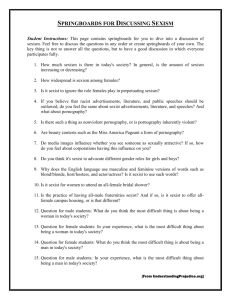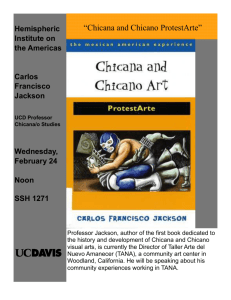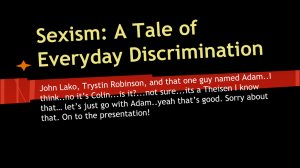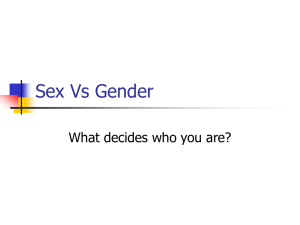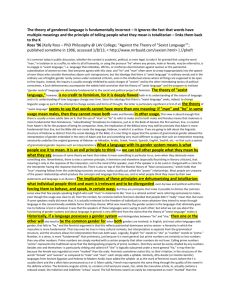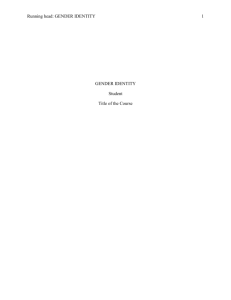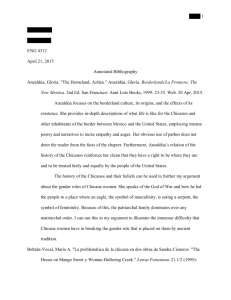Language and Gender Language and Gender Sexism in English
advertisement
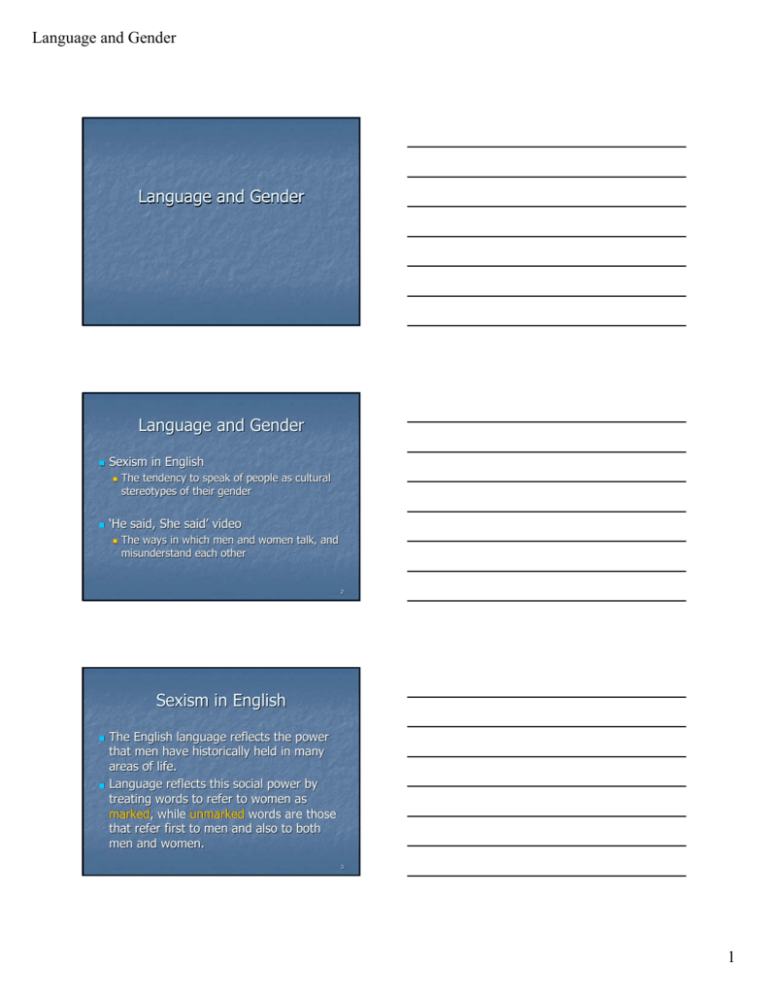
Language and Gender Language and Gender Language and Gender Sexism in English The tendency to speak of people as cultural stereotypes of their gender ‘He said, She said’ said’ video The ways in which men and women talk, and misunderstand each other 2 Sexism in English The English language reflects the power that men have historically held in many areas of life. Language reflects this social power by treating words to refer to women as marked, marked, while unmarked words are those that refer first to men and also to both men and women. 3 1 Language and Gender Markedness Mankind Women 4 Markedness Poet Poetess 5 Markedness Actor Actress 6 2 Language and Gender Markedness Nurse Male nurse 7 Sexism in Language Why avoid sexism in language? Some people feel insulted by sexist language. Sexist language creates an image of a society where women have lower social and economic status than men. Using nonsexist language may change the way that users of English think about gender roles. 8 Sexism in Language Avoid ambiguity in gender identity or gender role by choosing nouns, pronouns, and adjectives that specifically describe people. Sexist bias can occur when pronouns are used carelessly, as when the masculine pronoun he is used to refer to both sexes or when the masculine or feminine pronoun is used exclusively to define roles by sex (e.g., “the nurse ... she” she”). The use of man as a generic noun or as an ending for an occupational title (e.g., policeman) policeman) can be ambiguous and may imply incorrectly that all persons in the group are male. Be clear about whether you mean one gender or both genders. 9 3 Language and Gender Sexism in Language Avoid ambiguity in gender identity or gender role by choosing nouns, pronouns, and adjectives that specifically describe people. Sexist bias can occur when pronouns are used carelessly, as when the masculine pronoun he is used to refer to both sexes or when the masculine or feminine pronoun is used exclusively to define roles by sex (e.g., “the nurse ... she” she”). The use of man as a generic noun or as an ending for an occupational title (e.g., policeman) policeman) can be ambiguous and may imply incorrectly that all persons in the group are male. Be clear about whether you mean one gender or both genders. 10 How Can You Avoid Gender Bias? Someone has left his briefcase behind. Man, mankind A fashion model is usually obsessive about her diet. To man a project The manman-machine interface Manpower Man’ Man’s search for knowledge Research scientists often neglect their wives and children. Woman doctor, lady lawyer, male nurse, woman driver Mothering Chairman of an academic department 11 How Can You Avoid Gender Bias? Foreman, mailman, salesmanship Cautious men and timid women Participants were 16 men and 4 women. The women were housewives. Freshman, penmanship Walt Whitman 12 4 Language and Gender Creative Writing In some languages, gender specific language is very difficult to avoid. In Spanglish, chicano is grammatically masculine and unmarked, and chicana is grammatically feminine and markedly female. In German, Professoren is grammatically masculine and unmarked, and Professorinnen is grammatically feminine and markedly female. 13 Creative Writing GenderGender-neutral Spanglish Chican@ Chican@ in place of ‘chicano’ chicano’ and ‘chicana’ chicana’ GenderGender-neutral German ProfessorIn in place of ‘Professoren’ Professoren’ and ‘Professorinnen’ Professorinnen’ 14 Who are these people and what do they do? 15 5 Language and Gender A father and his son were both in a car accident. The father was killed, and the son was rushed to the hospital, where he needed an emergency operation to save his life. The surgeon examined the boy before the operation and said, “I can’ can’t operate on this child. He is my son.” son.” How can this be? 16 17 He Said, She Said Deborah Tannen on gender, language, and communication The ways in which men and women talk, and misunderstand each other A 5050-minute video in seven parts 18 6 Language and Gender He Said, She Said 1. 2. 3. 4. 5. 6. 7. Boys and girls Status and connection Directness and indirectness Public talk and private talk Ritual opposition Conversational style Conclusion 19 Last Thoughts In all of this we have treated gender as binary: male or female. But we recognize different gender expressions in addition to these two: LGBT (lesbian, lesbian, gay, gay, bisexual, bisexual, transsexual) transsexual) is one expression. 20 7
